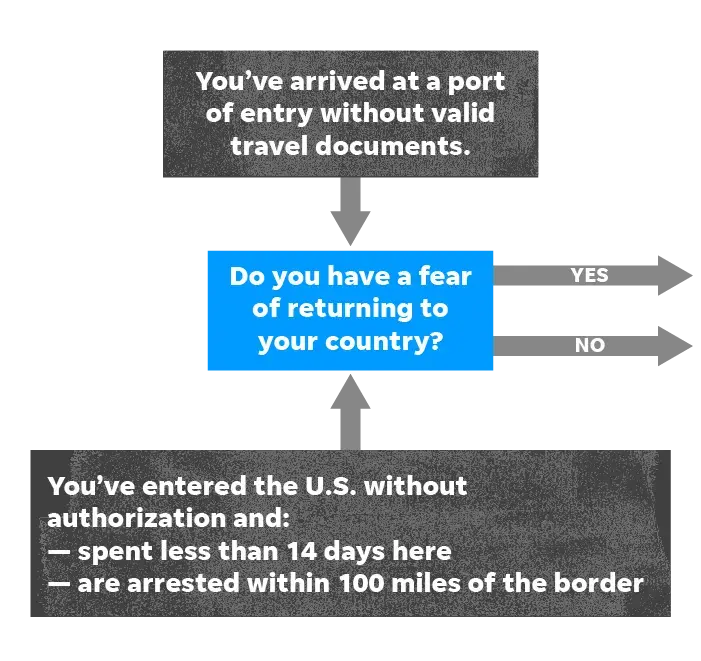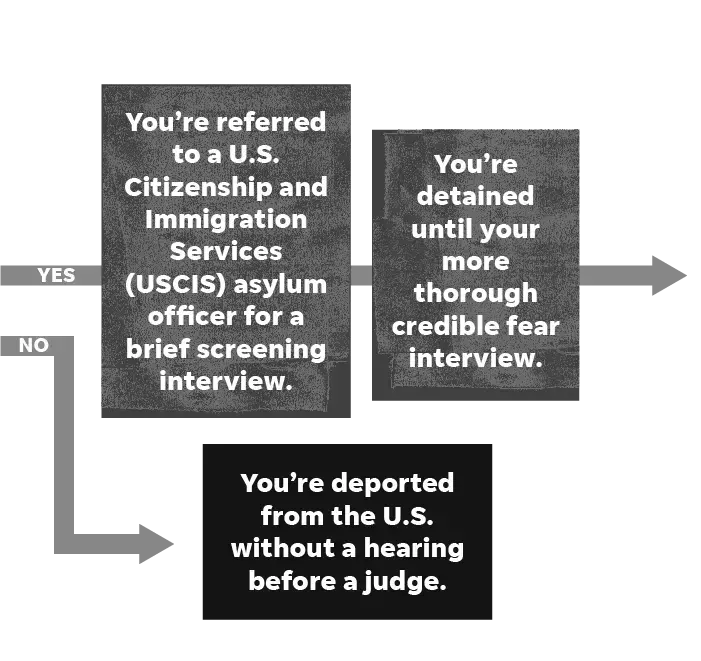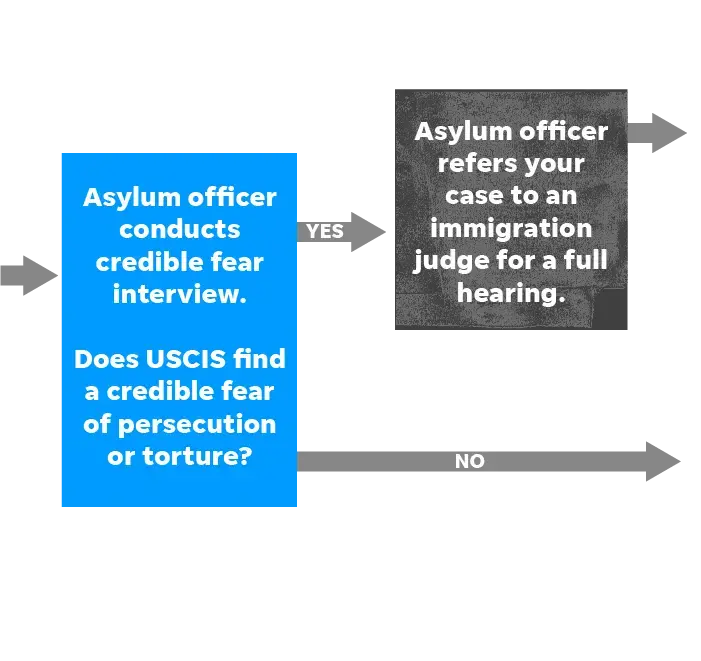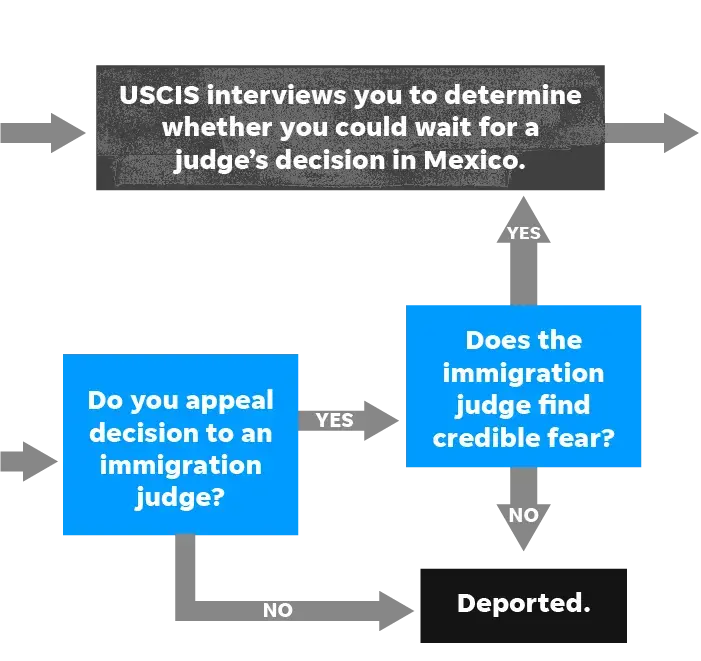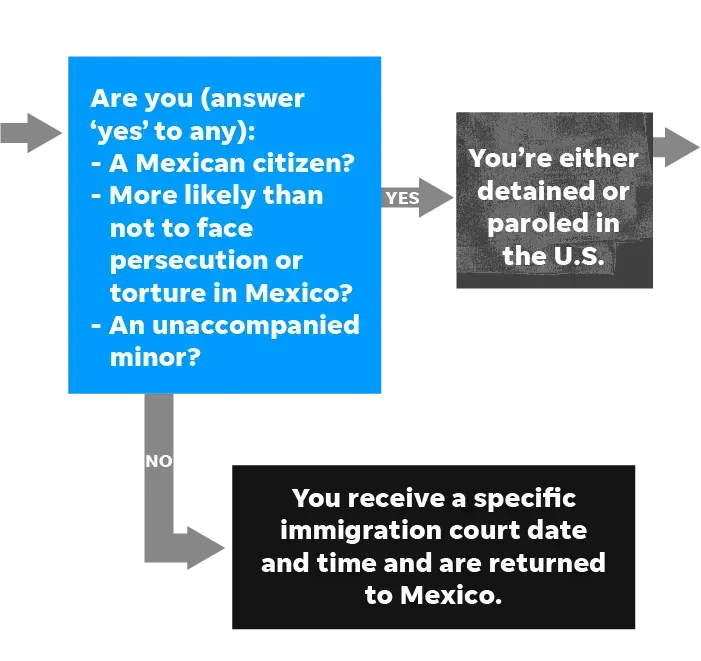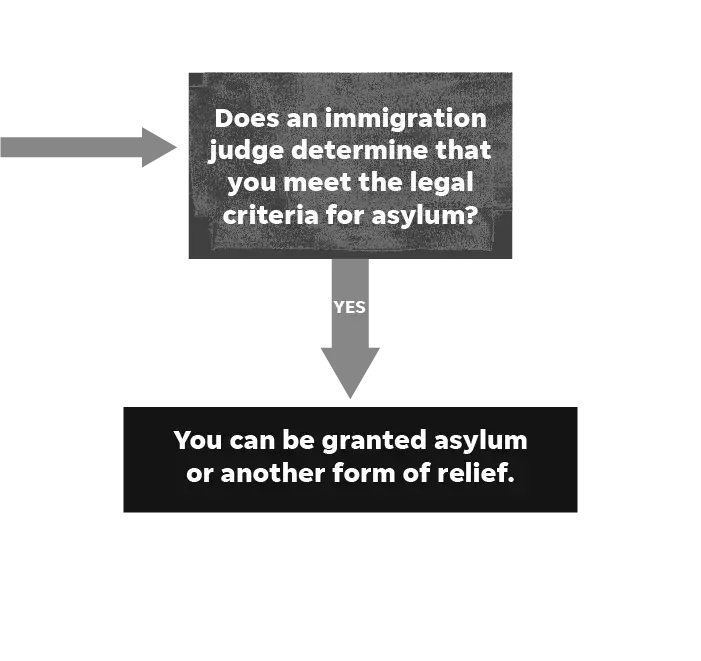
Editor's note: Several subjects featured in these stories granted interviews on the condition that The Desert Sun not publish their names or photograph their faces, due to safety concerns. The reporters conducted all interviews with asylum seekers and migrants in Spanish and translated their quotes for this report. More about this series.
Alfredo started to wail when he spotted his 19-year-old son’s body along the winding, two-lane highway that connects his hometown of Chilapa de Álvarez and Chilpancingo, the capital of the southwestern Mexican state of Guerrero.
Alfredo had been searching for his son Leonel for two days. He said he heard federal police had detained Leonel and three friends after school. People who witnessed the incident told Alfredo the police loaded the four into trucks. But beyond rumors, Alfredo didn’t know what happened to his son.
It was 2015 and two criminal organizations, Los Rojos and Los Ardillos, had been fighting for control over Chilapa, a city of about 31,000 surrounded by lush green mountains. By one count, the homicide rate had more than doubled over the year before. Teenagers and young men were the main casualties. Yet many people, distrustful of law enforcement, didn’t report the crimes to local authorities.
When his family got a tip about Leonel’s whereabouts, Alfredo, his brothers Martín and Jorge, and their father piled into a car and sped west along the highway. About four miles from Chilapa, they found Leonel’s body near two others. He was face up and wearing a short-sleeved t-shirt, Alfredo said. Leonel’s throat was slit, his father said, but he wasn’t decapitated.
In the months after Leonel’s death, Alfredo came to a realization.
“We decided to leave, before anything worse happened to us,” Alfredo said. “We had seen, with other families, that if you say something, they will destroy everyone.”
Alfredo knew where to go: The United States, where he had lived and worked without authorization on and off for six years in the late 1990s and early 2000s. On his first trip, he picked asparagus and cherries in California’s Central Valley. On later trips, he worked in plant nurseries and on Christmas tree farms in Oregon.
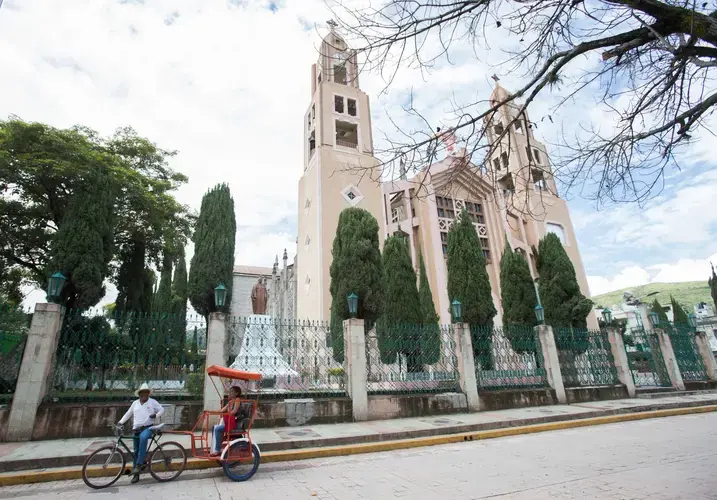
Following Leonel’s death, Alfredo got a temporary work visa and left for the United States. His son’s death spurred at least seven members of his extended family to leave Guerrero as well. Alfredo is currently living in Oregon's Willamette Valley with his two young daughters and their mother, who are seeking asylum. Alfredo’s brother Martín won asylum in 2018, after he claimed one of Chilapa’s criminal groups had targeted him because of his familial connection to Alfredo and Leonel. Martín, his wife and two sons, who are also seeking asylum, now live in Oregon, walking distance from Alfredo’s apartment.
As international attention has focused on caravans of Central American migrants arriving at the U.S. border to seek asylum, the exodus of people fleeing the fallout from Mexico’s drug war has received less notice. Since fiscal year 2014, the total number of asylum applications has surged—more than tripling. The trend has been even more pronounced for Central Americans and Mexicans. The number of asylum applications adjudicated for those countries combined has quadrupled during the same time period. Since 2007, the number of Mexican asylum applications adjudicated has increased by nearly 18 times. In 2018, 10,923 Mexicans applications for asylum in the U.S. were processed, second only to El Salvador, with 12,002 asylum applications. Practically one out of every five asylum applications processed in 2018 came from Mexico.
For decades, people like Alfredo and his siblings have left Guerrero, one of the poorest states in Mexico, mainly for economic reasons. The mostly low-skilled migrants labored in fields in California, or in restaurants in New York, without authorization, and sent money home to their families. But the number of unauthorized migrants from Mexico apprehended at the southwest border has been steadily declining since 2004 and flattened since 2014, according to U.S. Customs and Border Protection. The improving Mexican economy, enhanced U.S. immigration enforcement and a long-term drop in Mexico’s birth rate all contributed to the change, according to the Migration Policy Institute, a non-partisan think tank in Washington, D.C., focused on immigration.
But a different Mexican migration pattern is emerging as homicides reached a record 33,341 in 2018 and as more than 37,000 people remain missing amid the country’s extended drug war. The violence is particularly intense in the southwestern states of Guerrero and Michoacán, two of five Mexican states the U.S. government says Americans should not travel to due to crime. In recent years, people have been fleeing Guerrero and Michoacán not only to improve their lives, but to save their lives.
U.S. asylum application decisions by country
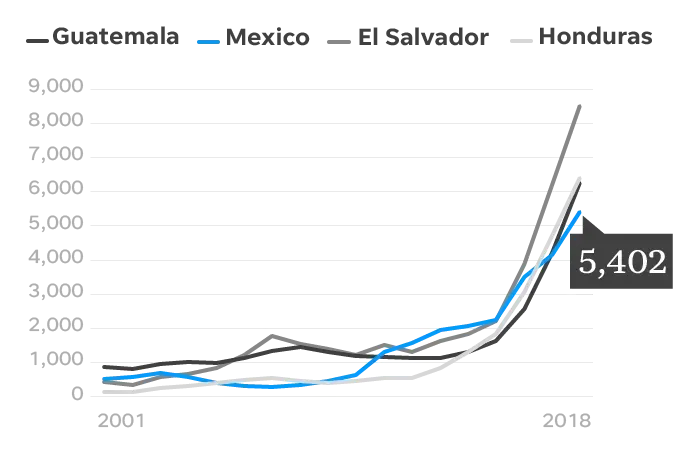
Since early last year, migrant shelter operators in Tijuana said they have seen a pronounced increase in families from Guerrero and Michoacán seeking asylum. But it is nearly impossible to determine how many Mexican asylum seekers are from Guerrero. A spokesman for U.S. Citizenship and Immigration Services said the agency collects asylum seekers’ previous addresses, but does not retain this information in any database.
The Desert Sun traced the footsteps of Alfredo and his family from Chilapa, to the U.S.-Mexico border, to Oregon to tell the story of what it is like to live in Guerrero and what causes people to migrate. The stories of the three brothers—Alfredo, Martín and Jorge—capture how violence is driving a new wave of migration from southwestern Mexico. Their experiences also provide a window into what is at stake for Mexican asylum seekers, and for those who remain behind.
‘Chilapa is a war zone’
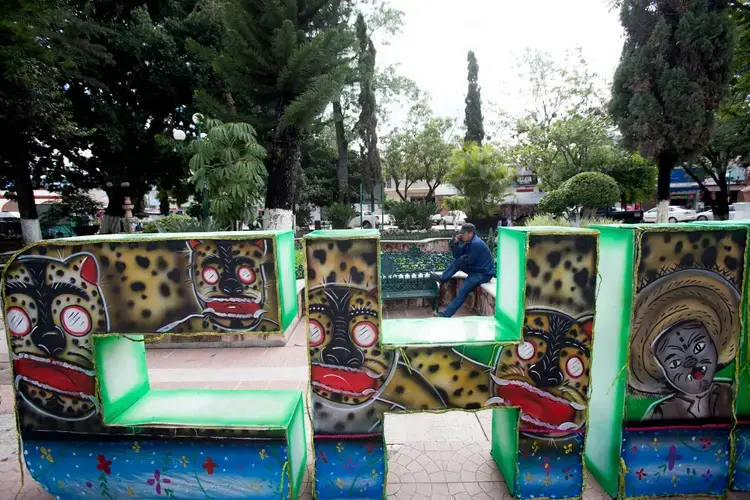
On a typical Sunday in Alfredo’s hometown of Chilapa, people of all ages and backgrounds congregate in the city’s zócalo, or town square. In the shade of the zócalo’s trees, teenagers pose for selfies with friends, mothers eat ice cream with their kids and a shoe shiner polishes a customer’s boots.
A couple blocks from the zócalo, artisans from the neighboring indigenous communities sell crafts—handbags made from woven palm leaves and painted figurines in the shape of fantastical creatures—on the sidewalk along the city’s main drag.
"Fear shouldn’t dominate us, because fear can paralyze people. Fear doesn’t produce good things."
—Salvador Rangel Mendoza, bishop of the diocese serving Chilapa and Chilpancingo
During the day, life goes on as normal. But while in other Mexican cities the town square remains vibrant well into the evening, in Chilapa, people clear out of the zócalo before the sun sets. They go home and lock their doors.
At Sunday mass, Salvador Rangel Mendoza, bishop of the diocese serving Chilapa and Chilpancingo, leads worshipers in prayers. He said Pope Francis assigned him to the Guerrero diocese because he has experience ministering in conflict zones, including six years in Israel. Behind the scenes, the bishop has mediated discussions between rival criminal groups. Fear is a topic he said he raises regularly during his sermons.
“Fear shouldn’t dominate us, because fear can paralyze people. Fear doesn’t produce good things,” Rangel Mendoza explained. He shows up at the church each week, even during periods of escalating violence, he said, “to show them courage and that people shouldn’t be afraid.”
The increased violence in Chilapa is a symptom of the country’s evolving drug trade.
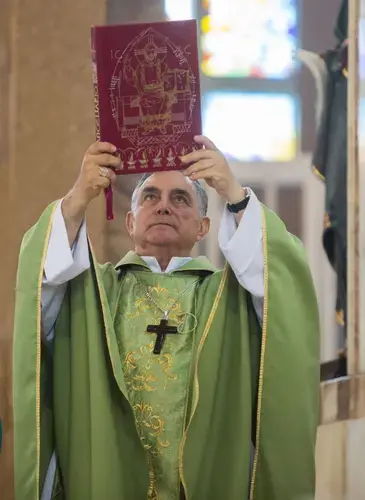
The state’s first drug trafficking network, built by the Beltrán Leyva brothers, emerged in the 1990s, according to Chris Kyle, an associate professor in the Department of Anthropology at the University of Alabama at Birmingham and an expert on Guerrero’s violence. The brothers served as a branch of the Sinaloa cartel, which was founded in the northwest Mexican state of Sinaloa and became one of the largest and most powerful trafficking groups in the Western Hemisphere.
Ten days after he assumed office in 2006, Mexican President Felipe Calderón launched a massive military effort to crack down on the drug trafficking organizations. Calderón deployed several thousand military troops and federal police to fight the criminal groups in hot spots across the country.
Calderón’s strategy was to eliminate drug kingpins, said Gladys McCormick, an associate professor of history at Syracuse University’s Maxwell School of Citizenship and Public Affairs, who specializes in the security crisis in Mexico. The military, with U.S. assistance, has captured or killed 25 of the top 37 drug kingpins in Mexico, according to the Council on Foreign Relations, a non-partisan think tank focused on international relations.
The thinking was, “if you take off the head, the body will die,” McCormick said. But rather than eliminating the cartels, the tactic has had a splintering effect in Guerrero and in other parts of the country, she said. As cartel leaders have been captured or killed, their members have created smaller organizations. These new groups have diversified their criminal activities, adding extortion, kidnapping, auto theft, human smuggling and retail drug sales, according to a U.S. Congressional Research Service report.
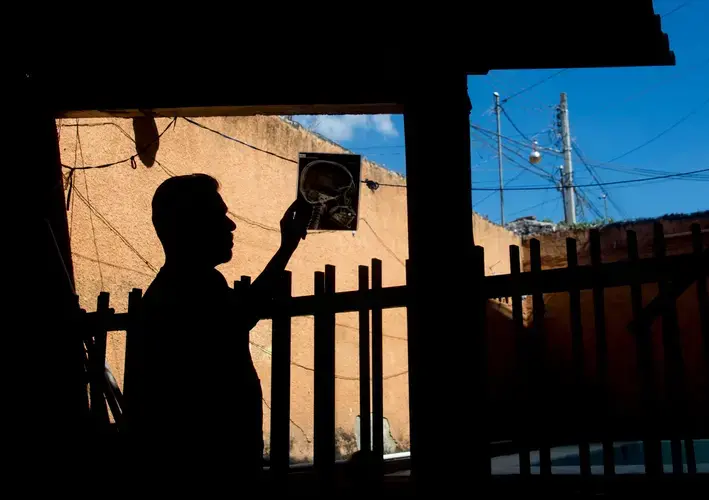
The leader of the Beltrán Leyva organization was arrested in 2008, reportedly due to intelligence provided by fellow Sinaloa member and convicted drug lord Joaquín “El Chapo” Guzmán, according to the Congressional Research Service. The betrayal spurred the Beltrán Leyva brothers to split from the Sinaloa cartel and form their own trafficking organization. One Beltrán Leyva brother was killed in 2009 and another was arrested soon after. That left one surviving brother to lead the family organization; he was arrested in 2014.
In Guerrero, as the Beltrán Leyva group broke apart, splinter organizations began warring over control of Chilapa, the main gateway to the poppy production zones in the state’s mountainous region.
In 2010, the nephew of “El Rojo,” a deceased Beltrán Leyva lieutenant, established a new, independent group that became known as Los Rojos. The group inherited control of central Guerrero from the Beltrán Leyva organization. By 2012, they controlled Chilapa and other cities in the region.
In 2014, a small trafficking and extortion network known as Los Ardillos aggressively challenged Los Rojos for power in Chilapa. The group had been founded more than two decades earlier and specialized in kidnapping and extortion. When the group’s leader was killed in 2011, his three sons took the group’s reins. A fourth son is a Guerrero politician.
In one incident in May 2015, hundreds of armed men believed to be associated with Los Ardillos poured into Chilapa in broad daylight. During the five-day standoff, the men roamed the town searching for suspected members of Los Rojos. At least 16 people disappeared.
By 2015, the war between Los Rojos and Los Ardillos was escalating. Homicides in the municipality of Chilapa had increased 50 percent over the year before, according to the state attorney general’s office, which counts open homicide investigations. But Kyle, the researcher who tracks homicides in Guerrero by scouring press coverage, said homicides more than doubled between 2014 and 2015. Kyle said his count differed from the state’s in 2015 because 29 buried bodies were discovered that year in clandestine graves in Chilapa. He said he counted all 29 deaths, while the state agency lumped those deaths into three homicide cases.
The homicide rate in Chilapa then decreased in 2016, Kyle said, as a result of an increased military presence in the city. The number of killings fell when soldiers were present, he said, but rose again when the troops left.
Today, Calderón’s strategy targeting kingpins is widely considered a failure, said McCormick of Syracuse University. (Calderón left office in 2012.)
Global homicide hot spots
In 2017, Chilapa, Mexico, had more homicides per 100,000 residents than some of the most dangerous large cities in the world and U.S.

The flow of drugs through Mexico hasn’t stopped. Mexico produced about 93 percent of the heroin seized in the U.S. in 2015, according to the Congressional Research Service. While there are no reliable numbers on the acreage of land in Guerrero dedicated to the cultivation of marijuana and poppy, or the state’s overall narcotics output, Kyle said, it’s generally agreed that Guerrero is the source of between 50 and 70 percent of the heroin produced in Mexico.
Mexican criminal organizations are also trafficking fentanyl, a synthetic opioid 30 to 50 times more potent than heroin, according to the Congressional Research Service.
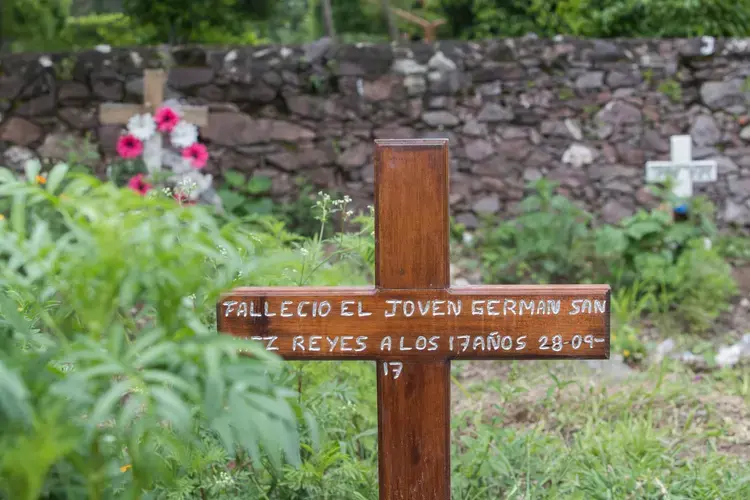
And the violence hasn’t subsided. In 2017, in the municipio of Chilapa—a county-like political subdivision that includes Chilapa and surrounding areas — the homicide rate was 191 per 100,000 people, according to Kyle’s calculations; according to the state attorney general, it was 134.8 homicides per 100,000 people. Either of the estimates make Chilapa’s homicide rate higher than Los Cabos, on the southern tip of Mexico’s Baja California peninsula, which won the ignominious distinction of the “world’s most dangerous city” that year, according to Citizen Council for Public Security and Criminal Justice, a Mexico City-based advocacy group. The group ranked cities outside of combat zones with populations above 300,000. Chilapa has a population of only about 130,000.
Today, there are military checkpoints along the highway into and out of Chilapa. Soldiers with combat helmets and guns slung across their chests guard Chilapa’s zócalo. Yet the rival groups continue firing at each other in the streets. They kidnap people and demand ransoms.
They also engage in more covert terrorism. The groups extort people who own stores and small stands in the markets. Business owners must pay the weekly fee or face consequences. The groups post hit lists on social media sites like Facebook and WhatsApp. They identify people by their names or nicknames and use crude language and slang to threaten them.
“We can say there’s lots of military, lots of police, but there’s not security. When I leave my work or my home, I know that I’m entering enemy territory and I have to be prepared.”
—Manuel Olivares Hernández, director of José María Morelos y Pavón Regional Center in Defense of Human Rights
“We can say there’s lots of military, lots of police, but there’s not security,” said Manuel Olivares Hernández, director of a Chilapa-based human rights organization called José María Morelos y Pavón Regional Center in Defense of Human Rights. “When I leave my work or my home, I know that I’m entering enemy territory and I have to be prepared.”
“Chilapa is a war zone,” he said.
An employee in the local cemetery recalled a time when a few young men were burying their friend. Then shots broke out.
“In that moment, we didn’t have one, but two bodies,” he said.
There’s a small memorial to the second body, just outside the cemetery.
‘How can you report a crime?’
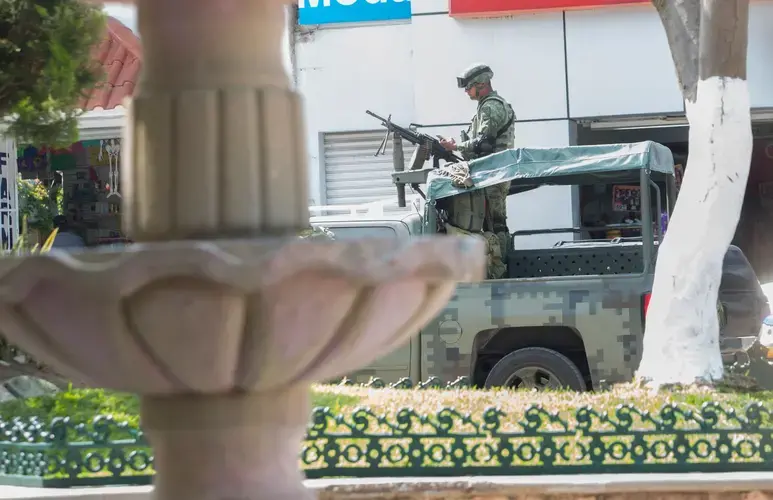
Alfredo said Leonel hadn’t been involved with the criminal groups, but he had worried his son and his son’s friends were associating with the wrong crowd. Leonel had always been a sharp student and had expressed interest in attending a military school, his father said. He was an avid soccer player and especially close to his grandmother.
But Alfredo had seen Leonel’s friends zipping around the city on motorcycles, the vehicle commonly used by young men associated with the groups. He said he fought with Leonel about his son’s friendships.
Alfredo said he checked with officials at police stations in Chilapa and Chilpancingo. In Mexico, officials sometimes tell people to wait up to 72 hours before reporting a missing person, so Alfredo said his only option was to look for Leonel himself.
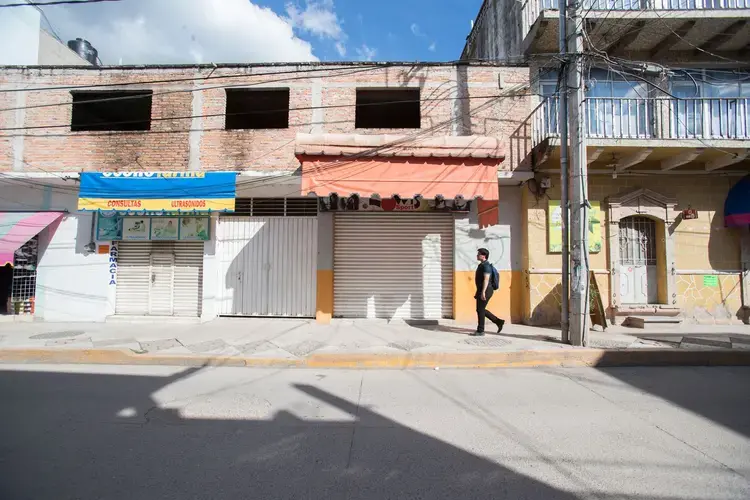
The police released Leonel’s friends, but denied having anything to do with Leonel’s disappearance, Alfredo said. Leonel’s friends, however, told a different story. Alfredo said they told him the police had taken Leonel in a separate vehicle. Alfredo said he heard another rumor that the police had turned Leonel over to one of the two criminal groups.
Witnesses, afraid to report what they saw to the police, remained silent. In Guerrero, he said, people believe that some police collaborate with the criminal groups, and worry that if they serve as witnesses or report a crime, the groups will retaliate. In February 2019, four municipal police officers from Chilapa were arrested for working with Los Rojos.
The fear of retribution is so entrenched, people typically don’t speak the names of the groups suspected of crimes, even when discussing violent incidents.
In 2017, more than 93 percent of crimes in Mexico were either not reported or went uninvestigated, according to a crime victimization survey conducted by Mexico’s statistics office. The percentage of unreported or uninvestigated crimes in Guerrero was the highest in the country: 96.8 percent.
"How can you report a crime if you don’t know what happened? Aside from that, if you want to report a crime, the way the situation is there, you run the risk that something will happen to you, too."
—Alfredo
Nationwide, nearly two-thirds of those who didn’t report a crime in 2017 said it was because of their perception of authorities, according to the statistics office. Among those, most said they viewed reporting a crime as a waste of time, or that they generally distrusted authorities.
“How can you report a crime if you don’t know what happened?” Alfredo said. “Aside from that, if you want to report a crime, the way the situation is there, you run the risk that something will happen to you, too.”
On the third day following his son’s disappearance, Alfredo, his brothers Jorge and Martín, and their father loaded into a car and drove west along the highway that connects Chilapa and Chilpancingo. Typically, people on the side of the highway sell fruit, cooked corn and, during the fall, bunches of marigolds that are used in Day of the Dead celebrations. Donkeys, dogs and cows meander alongside the road, which is lined with wildflowers.
Martín, who was driving, stopped the car when he reached a police roadblock, Jorge recalled. From the car, he said, they could see police officers, military officials and about 40 onlookers. Martín and their father left the car to go see if what they feared was true.
When Alfredo finally glimpsed his son’s body, he began to cry. It was evident Leonel had been beaten in the face and across his body. Leonel had markings on his wrists, as if he’d been tied up. His skin and clothing were caked in dirt.
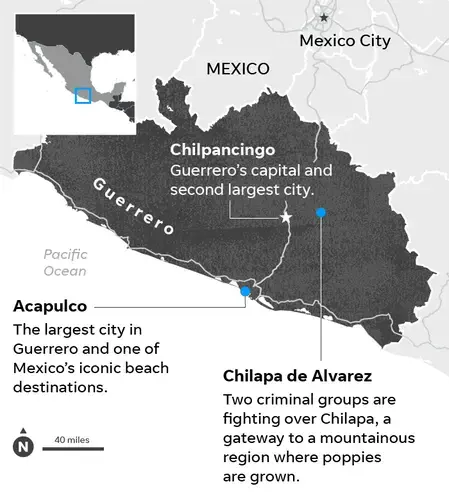
Officials never investigated Leonel’s death, Alfredo said. To this day, Alfredo doesn’t know who killed his son. It could have been the federal police, or Los Rojos or Los Ardillos, he said.
About two-thirds of homicides in the U.S. result in an arrest and indictment, while in Mexico the rate is less than two percent, according to McCormick, the Syracuse University professor.
The violence spurred by the extended drug war, combined with the widespread mistrust and fear of Mexican authorities, and the lack of justice in the country, are major reasons people flee Mexico, said Everard Meade, a professor at the University of San Diego’s Joan B. Kroc School of Peace Studies, who often serves as an expert witness in Mexican asylum cases.
“I haven’t done an asylum case in the past couple years where the risk and the threats people face for reporting (crimes) wasn’t part of the persecution,” Meade said. Impunity, he said, is “at the core of what people are fleeing.”
Catholic families in Mexico gather for nine days after a funeral to pray. During the time his family was observing Leonel’s death, Alfredo said the federal police cruised by his house repeatedly and parked at the end of his street. Alfredo said he thinks the police were working with one of the criminal groups.
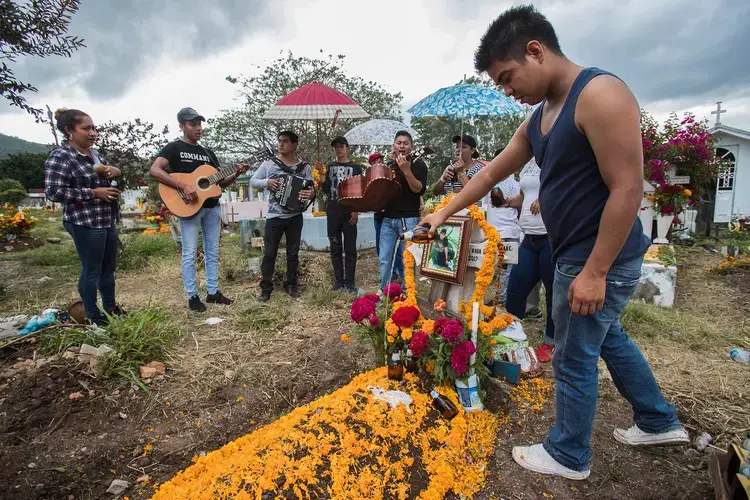
“For me, it was a form of intimidation,” he said.
Before Leonel’s death, Alfredo had received threats from both of the criminal groups—one wanted Alfredo to join them, the other incorrectly thought he worked for the rival. After his son’s death, Alfredo said the groups’ threats against him intensified. Alfredo’s friends passed along the groups’ warnings: They said Alfredo could end up dead like his son.
Four months earlier, Alfredo had applied for a U.S. work visa through a federal program that allows employers to hire foreign agricultural workers on a temporary basis. At the time, he said, “my plan was to go work, for no more than a few months, and then return and respect the work visa.”
When Alfredo finally got the visa, six months after his son’s death, he said he felt as if he had just one option. In April 2016, he left behind his daughters and their mother, his parents and his brothers, Jorge and Martín, and took a two-month job harvesting tomatoes in Florida.
Given the levels of violence in Chilapa and the risk he said he faced there, from the police and the two groups, he decided he could not return to Guerrero after his visa expired. Instead, he overstayed the visa and remained in the U.S. He went to Oregon, where his sister and other relatives lived.
‘There is not persecution by the state’
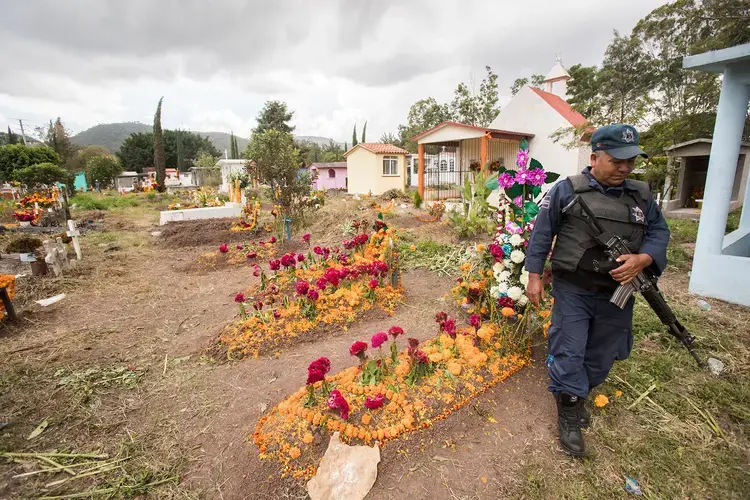
Even before Leonel’s death, Alfredo said his young daughters would tremble and cry when they heard shootouts in the streets. They had terrible nightmares. They become more terrified after the violence touched their family.
“It was traumatizing for them to live amid what appeared to be a war,” Alfredo said.
In June 2016, two months after Alfredo left Chilapa, his two daughters and their mother left Guerrero and sought asylum in the U.S.
To win asylum, applicants have to prove they have suffered persecution, or fear they’ll suffer persecution, due to their race, religion, nationality, political opinion or membership in a particular social group. When the alleged persecutor is unaffiliated with the government, people must show their country’s government is unwilling or unable to protect them.
It’s a hard argument for Mexicans to make.
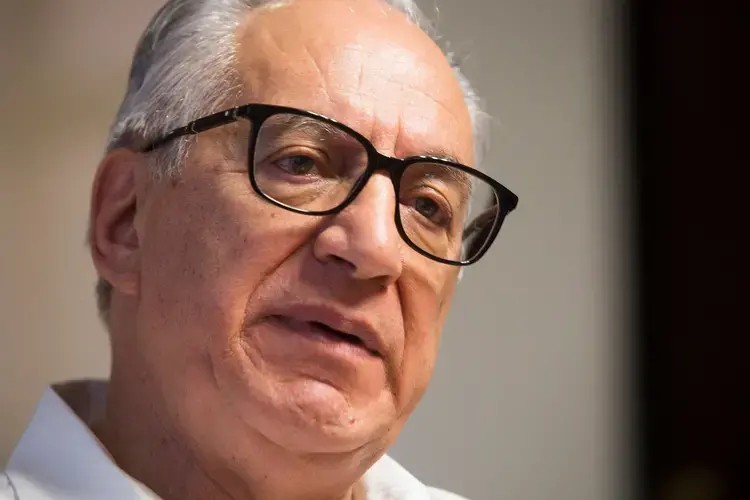
Florencio Salazar Adame, the secretary general of Guerrero, acknowledged the state has a problem with insecurity.
“In Guerrero, we have problems, but there is not persecution by the state against its citizens,” Salazar Adame said.
Sarah Pierce, a policy analyst at the Migration Policy Institute, said the United State’s definition of persecution is “outdated.” The U.S. asylum system, modeled off the United Nations’ 1951 Refugee Convention and codified in the 1980 Refugee Act, was developed to protect people from state-sponsored persecution, like ethnic cleansing and authoritarianism, she said. Pierce said most asylum seekers today, including those from Guerrero, are not fleeing a hostile government, but rather private acts of violence.
The Trump Administration has taken steps to deter people from seeking asylum. Asylum seekers already endure long waits to make their initial claims at the southern border. In December, the administration announced a plan that will lengthen asylum seekers’ wait in Mexico. The plan, which is being challenged in federal court, requires nearly all people seeking asylum in the U.S. to remain in Mexico for the duration of their immigration proceedings. (Mexicans will still be allowed to wait in the U.S. for their cases to make their way through the courts.)
Currently, the average time an immigration case is pending in court is 710 days, or nearly two years, according to Syracuse University’s Transactional Records Access Clearinghouse, or TRAC.
The Trump Administration has also tried to make it harder for people to qualify for asylum. Under current law, people can seek asylum at a port of entry or if they are apprehended by border officials while crossing between ports. The administration tried to disqualify asylum seekers who cross the border between ports, but the Supreme Court in December upheld a federal judge’s order blocking the policy. Also in December, a federal judge blocked a ruling by former Attorney General Jeff Sessions that barred people from seeking asylum based on fears of domestic violence or gang violence.
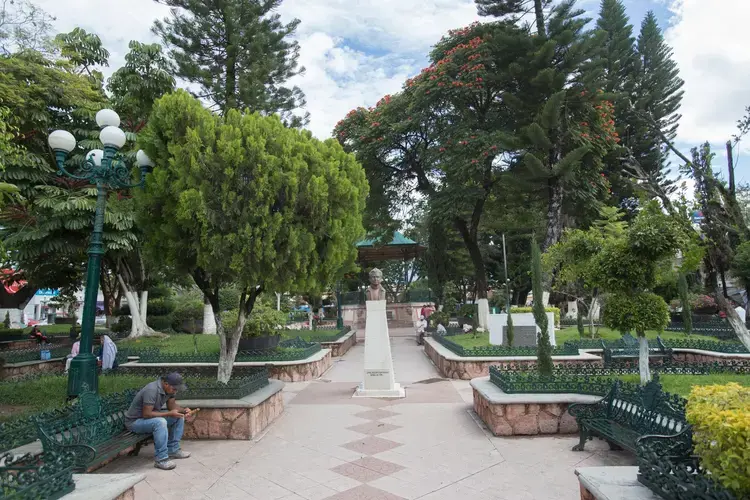
In 2018, U.S. immigration judges decided more cases than in 15 years, according to TRAC. A record 65 percent of those resulted in denials, TRAC said.
Mexican asylum seekers are especially unlikely to win their cases. About 13 percent of Mexicans seeking asylum in 2018 got it, a lower percentage than for asylum seekers from Honduras, Guatemala and El Salvador.
“They don’t want to quote-unquote open the floodgates to all Mexicans to become asylees in the United States,” said Judy Wood, an immigration lawyer based in Los Angeles, explaining that Mexicans typically need strong proof of persecution, typically based on their political opinion or membership in a social group. “Otherwise, everyone could come here.”
Before Leonel’s death, Martín, Alfredo’s youngest sibling, never thought about leaving Chilapa. Martín was a business owner who sold clothing and phone accessories at a store in Chilapa. He said the criminal groups extorted him between 2008 and 2016. He said they stopped by his storefront every Sunday to collect about $25.
Yet, “it wasn’t in my mind to go to the United States,” he said.
But in November 2016, Martín was at home when he got a shocking message on his cell phone.
"They don’t want to quote-unquote open the floodgates to all Mexicans to become asylees in the United States. Otherwise, everyone could come here."
—Judy Wood, immigration lawyer
Los Ardillos had published a hit list on Facebook and, Martin said, his nickname was on it. In a string of expletives, they said they were going to kill him, he said. The Desert Sun was unable to verify the existence of the post.
The same day, Martín, his wife and their two kids piled into a car and fled Chilapa. For a year, they hid in various locations, including in Mexico City and the neighboring state of Morelos. During that time, Martín said his name appeared on two more lists. He felt hopeless and impotent, fearing there was little he could do to stay safe.
Finally, in September 2017, Martín and his family decided to go to Tijuana to seek asylum in the United States.
Martín’s wife and kids were detained for about 25 days in Dilley, Texas, and then released into the United States while their case proceeded, he said. Martín was transferred to a U.S. Immigration and Customs Enforcement detention center in Florence, Ariz., where he remained for 10 months, and later a federal prison in Phoenix, where he was held for one month.
The threats he had endured in Mexico had scared him; detention in the U.S. almost broke him.
‘I didn’t feel anything’
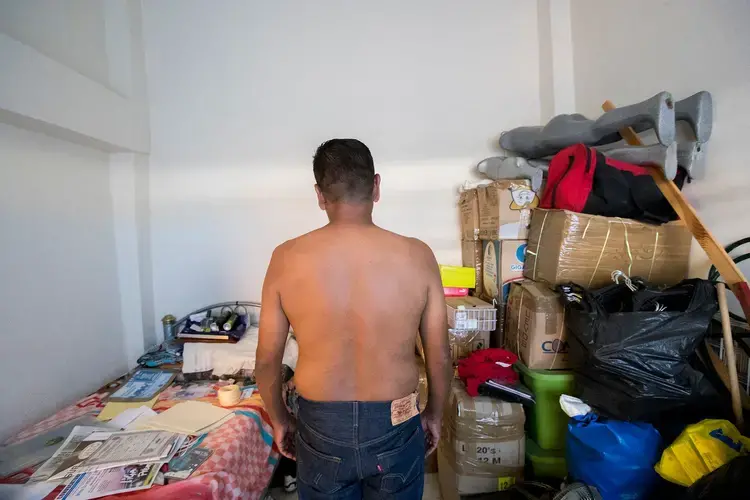
As Alfredo, his brother Martín and their families fled Mexico, their mother, Ana, remained in Guerrero. Their older brother, Jorge, had no choice but to stay in Mexico, following a 2015 deportation.
Jorge had been the first in the family to migrate to the United States. He entered the country without authorization in 1991. He lived in Texas and worked in construction and agriculture. His goal was to save enough money to build a home for his wife and young daughter back in Guerrero. But when he returned home to Chilapa in 1996, his family and dreams of building a home fell apart. Jorge said his wife had met another man.
A few months later, Jorge returned to the United States without authorization. He worked in Oregon and sent money home to his daughter. He remarried in 2000 and had two more kids. In 2004, he opened an auto body shop. He loved remodeling cars. With the money he earned, he bought himself a 1963 Impala, white with orange trim.
People have been migrating from Guerrero to the U.S. for economic reasons for decades. The state had the highest rate of out-migration of any Mexican state, according to a 2012 report from the Migration Policy Institute and the Woodrow Wilson Center. As of 2009, remittances—money immigrants send to people in their home countries—made up around 15 percent of Guerrero’s gross domestic product, more than any other Mexican state, the report said.
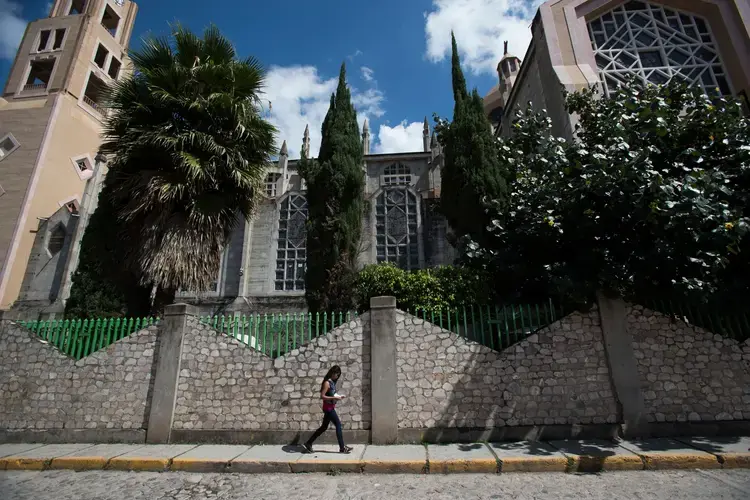
Yet Guerrero remains Mexico’s third-poorest state, after Chiapas and Oaxaca, according to the country’s social development agency. As of 2016, roughly two-thirds of Guerrero’s population lived in poverty; about a quarter in extreme poverty, according to the agency. The state had the country’s third-lowest literacy rate as of 2015, with 85.5 percent of people over age 15 literate, according to the country’s statistics office. About 13 percent of Guerrero’s residents older than five speak an indigenous language, according to the statistics office.
Jorge was arrested in the United States in 2015 for domestic violence. The Desert Sun was unable to locate his arrest records; he was living and working under a false name at the time. He said he spent about a month in jail and was given three years of probation.
But two immigration officers intercepted him as he went to check in at the probation office for the first time. He was detained in Tacoma, Wash., for three months and then deported to Mexico. His second wife and their kids—a 14-year-old boy and a 15-year-old girl—remained in Oregon.
Following his deportation, Jorge returned to Chilapa and opened another auto body shop. He said he was extorted within a week of opening his business. A criminal group demanded he pay about $15. He refused, he said.
“How am I going to pay if sometimes I don’t have work?” he recalled asking.
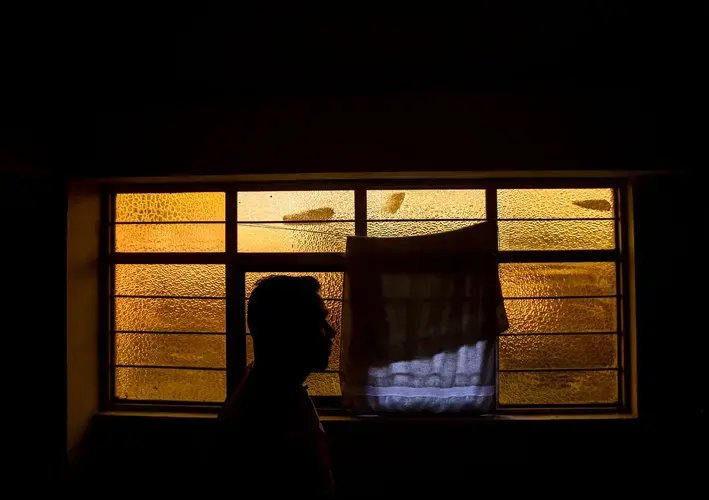
He abandoned his body shop and left Chilapa. He had been living in Mexico City for about six months when he learned that Leonel had gone missing. He returned to Chilapa and joined Alfredo, Martín and their father to find Leonel’s body.
One afternoon in December 2016, a little over a year after Leonel’s death, Jorge was about a half-block from his home in Chilapa when a grey truck rolled up. He said five or six young men got out of the vehicle and went directly for him. He didn’t know them, he said. He tried to defend himself, he said, but was overpowered. They pushed him into the truck. They hit him with their weapons on the head and across his body.
He lost consciousness. He said he doesn’t even remember if he felt fear.
“At the end, I didn’t feel anything,” he said.
He woke up in a hospital in Chilpancingo. In January 2017, doctors noted the left side of Jorge’s jaw was broken and that he had difficulty opening his mouth, according to documents shared with The Desert Sun. They took X-rays of his skull and mouth.
Jorge said it took him three months to regain his memory. When he recovered, he moved to the neighboring state of Morelos, where his half-sister lived.
He hasn’t returned to Chilapa and hasn’t filed a formal complaint.
“In Guerrero, they don’t want to know anything,” Jorge said. He pointed to the death of Leonel, saying, “they told us clearly that we should be careful about what we say because something could happen to us.”
‘Pretty impossible’ to win asylum
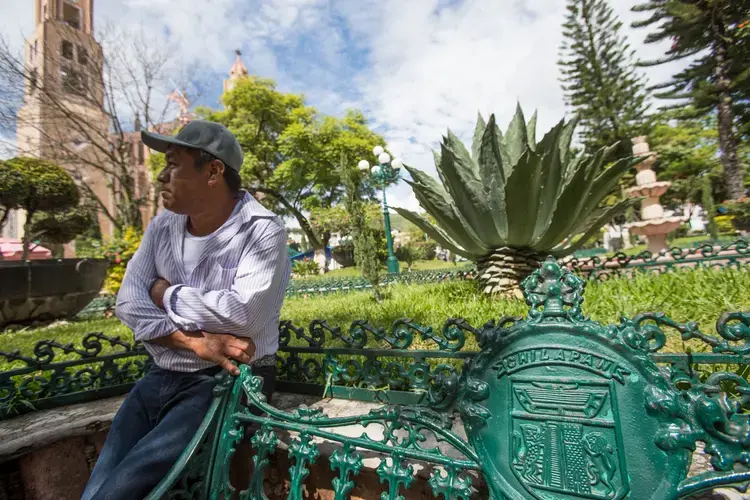
In the Florence, Arizona, detention center, an asylum officer interviewed Martín to determine if there was a significant possibility he would be persecuted or tortured if returned to Mexico.
Martín told the asylum officer he was threatened by both of the criminal groups warring for control over Chilapa.
“I was extorted for eight years by the cartel Los Rojos,” Martín said through an interpreter, according to asylum officers’ interview notes. Martin shared the notes, which were part of his asylum application, with The Desert Sun. “I had to pay them every week.”
"In 2015, the federal police took one of my nephews and we found him dead two to three days later. By the time we reported our nephew to the federal police, then we started receiving threats from Los Ardillos."
—Martin
Martín said Los Ardillos threatened his family because they were trying to investigate Leonel’s death. Alfredo, who was still in the habit of not saying aloud the names of the criminal groups, said he felt threatened by both groups, as well as by federal police officers, whom he believed were working with one of the groups.
“In 2015, the federal police took one of my nephews and we found him dead two to three days later,” Martín said, according to the notes. “By the time we reported our nephew to the federal police, then we started receiving threats from Los Ardillos.”
Martín passed the interview and remained in the Florence detention center.
Martín assembled his case in detention and acted as his own lawyer in his asylum proceedings. He presented newspaper articles about the violence in Chilapa. He pointed to the case of the 43 university students from the Ayotzinapa Rural Teachers’ College, who were attacked in Iguala, Guerrero, about 100 miles north of Chilapa, in 2014. According to the Washington Office on Latin America, a research and advocacy organization focused on human rights in the Americas, the students were attacked by municipal, state and federal police in 2014, with the knowledge of the army. The Mexican government has failed to find the students or hold the perpetrators accountable, WOLA said.

Mexicans fleeing cartel violence often try to win asylum by claiming they were persecuted because they are members of a particular social group. But it’s “pretty impossible” to win such cases, said Tania Nunez Amador, an immigration lawyer from Culver City, California, specializing in asylum. She said some Mexicans have been successful by arguing that their family is a targeted group—meaning they were targeted because of their familial relationship.
Another challenge for Mexicans: Asylum law says judges should deny asylum requests if there is evidence the applicants could avoid future persecution by relocating to another part of their home country. So Mexicans must prove they would be endangered if they moved to another part of the vast nation, about three times the size of Texas.
That can be a tough argument in front of immigration judges who might have traveled to Mexico for a vacation—a problem that Meade of the University of San Diego calls “the curse of familiarity.” He recalled serving as an expert witness in front of a judge who had recently returned from a beach holiday in the city of Zihuatanejo on Guerrero’s Pacific Coast.
Compiling the required evidence to prove persecution is another hurdle. Judges often request police reports and proof that people repeatedly asked law enforcement to investigate crimes. But, like Martín and Alfredo, many in Guerrero don’t report crimes because they view law enforcement as ineffective, corrupt or working in conjunction with criminal organizations.
Martín awaited the judge’s decision in detention. He recalled eating small amounts of poor-tasting food that lacked variety: pasta, vegetables, apples and, every day, mashed potatoes. He said he lost 40 pounds.
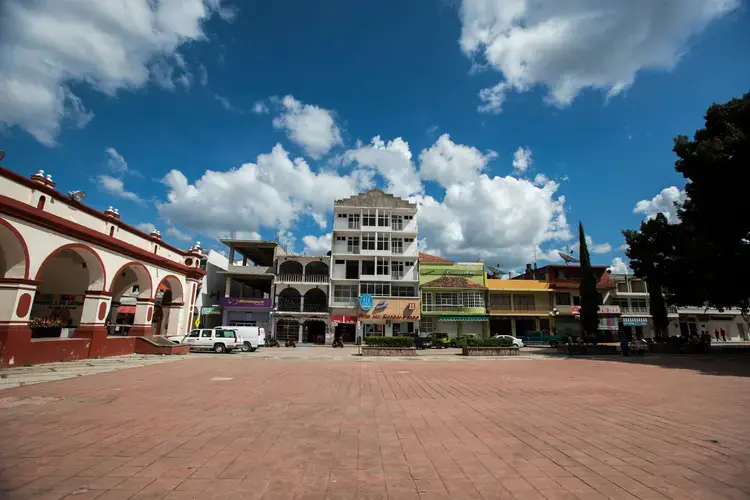
He became depressed. Immigration advocates who consulted on his case said he had a slim chance of winning asylum—just five percent, he said. Twice, he called his family to say he wanted to be deported. He couldn’t stand being locked up any longer.
But in the end, he said he had no choice but to wait.
“I did it for my family and to not return to Mexico,” he said. “Because if I returned, I would have returned alone and what would I be returning to? To danger in Mexico and Chilapa.”
In her May 2018 decision, immigration judge Molly Frazer determined Martín had credibly testified that he would face persecution in the future, from both Los Rojos and Los Ardillos, if he returned to Chilapa. She determined Martín had proven that being in his brother Alfredo’s family was a central reason for persecution by the two criminal organizations. She also found that Martín was unable to seek protection from the government, since he had credibly testified that the family had been threatened for trying to report the circumstances of Leonel’s death to local officials.
She weighed the conditions in Mexico, finding there was evidence that cartels’ criminal activities extend beyond drug trafficking and into kidnappings and extortion, and that forced disappearances and other crimes are not always adequately punished by the government. She noted that in Mexico, “the cartels and gangs are in league with certain corrupt officials.” She added that crimes are often not reported, because less than 10 percent result in a conviction.
On May 3, 2018, Frazer granted Martín asylum. The U.S. Department of Homeland Security appealed the decision, questioning whether she was wrong to determine Martín was persecuted on the basis of being related to his brother and sister-in-law. He was transferred to a federal prison in Phoenix while his appeal moved through the courts.
The government withdrew its appeal in August. At that point, Martín was released from prison.
“I didn’t believe it when they said, ’get your things together because you’re getting out,’” Martin recalled. “When immigration officials dropped me off at the bus station in Phoenix, I didn’t believe it.”
He made his way to Oregon to join his wife and kids, Alfredo and his family, and their sister and her family. After surviving death threats in Mexico and 11 months of detention, he became one of 629 Mexicans to win asylum during fiscal 2018.
‘Our goal is to live in peace’
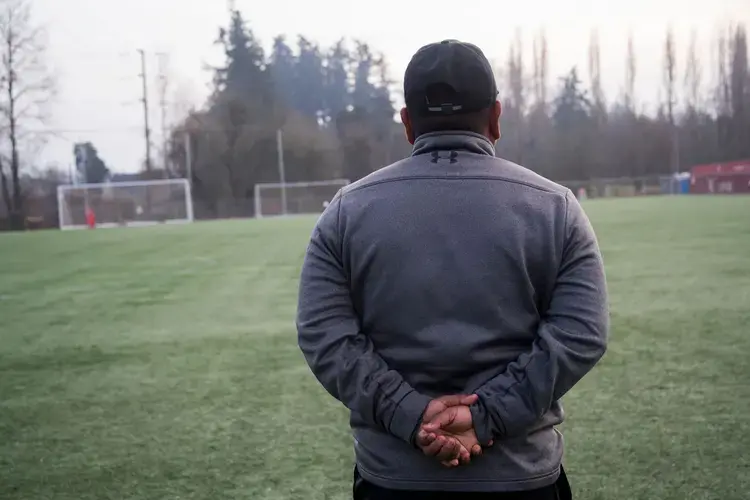
On a crisp December afternoon, Alfredo stuffed his hands into the pockets of a grey sweatshirt and surveyed an empty soccer field in Oregon’s Willamette Valley. Squawking birds flew in formations above. Since returning to the state in 2016, Alfredo has joined people from Mexico and other countries to play weekend games on the field. He also works as a referee for youth and adult soccer leagues.
Soccer is both an escape from his memories of Guerrero and his link back to them.
“At the moment that you’re playing on the field, you forget your problems and your worries,” Alfredo said. “You forget everything. I think that’s why we seek refuge in this sport—to forget all the bad things that happen in our communities.”
He choked up as he described the neighborhood field, at the base of the green mountains of Guerrero, where he and his friends used to play soccer after work. He said he thought of several of the boys on the neighborhood’s youth team in Chilapa as his own sons.
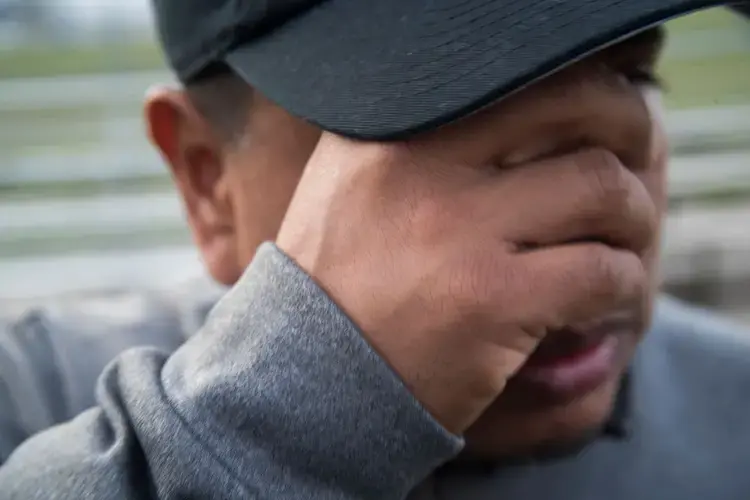
“It was the most beautiful [field] and at the same time, the most sad, because many of them aren’t around anymore,” he said. “Many of those young men that we spent time with are no longer alive. The only thing left are memories.”
Back at Alfredo’s apartment, as a soccer game blared on the television in the dark living room, Alfredo gazed at pictures of the neighborhood soccer teams in Chilapa. He pointed to a few players who were lucky enough to have fled Guerrero and moved to other states. Then he pointed to the smiling faces of the people who have since died amid the city’s violence. He counted three men from the adult team and six from the youth squad.
He tilted his head back and covered his face with his hands, as if to prevent tears from spilling out of his wet eyes and down his cheeks.
Alfredo said in the 1990s, he and his relatives came to the United States with the dream of working hard, making money and returning to Guerrero to build a house and start a business. This time, he said, they’re here to seek refuge. From Oregon, he follows Facebook accounts that track the latest deaths and disappearances in Chilapa.
“It’s the same sadness," he said. “The violence doesn’t stop.”
Alfredo likely missed his opportunity to apply for asylum; people seeking asylum must file an application within one year of arriving in the United States. His family’s next court date is in October. In the meantime, the girls, now ages 11 and 7, are learning English at school. Their mom juggles cooking, cleaning and laundry with kitchen shifts at a local Mexican restaurant.
"We didn’t come here now with the intention of getting rich or earning the grand life that people think the United States provides. Our goal is to live in peace, hope that our hometown becomes peaceful once again and, if possible, be able to return."
—Alfredo
“We didn’t come here now with the intention of getting rich or earning the grand life that people think the United States provides,” Alfredo said. “Our goal is to live in peace, hope that our hometown becomes peaceful once again and, if possible, be able to return.”
Martín, however, said he has no interest in returning to Mexico. He said he prefers to remain in the United States and provide his children with a better, safer life. And he can: Under U.S. immigration law, Martín can apply for a green card, which would grant him lawful permanent residence, one year after being granted asylum.
Martín, his wife and two daughters live with his sister and her family in a light blue house in a working-class neighborhood. There’s nothing about the outside of the house that indicates that its inhabitants fled violence and trauma in their home country. Inside the house, however, a framed photo of Leonel, with black, gelled hair and a warm smile, is displayed on the fireplace mantle. It sits next to a flickering Virgin of Guadalupe candle and a photo of another nephew who was abducted, killed and dismembered.
Some 2,800 miles away, Jorge remains in the state of Morelos, far from Oregon and displaced from Chilapa. In his bedroom, a TV sits atop cardboard boxes. In the corner of a spare room, more cardboard boxes are stacked five-high. The boxes contain the clothing and cell phone accessories he tried to sell in Morelos, he said. He was extorted there, too, so he closed the shop after six months.
Jorge said he works when he can get it. Otherwise, he doesn’t go out much. Criminal organizations are starting to infiltrate the city in Morelos where he currently lives and he feels insecure. He occasionally leaves the house to play soccer. If he goes out to eat, it’s to the Chinese restaurant a few blocks away. It’s almost as good as a Chinese restaurant he once worked at in Oregon, he said.
He said he’s thinking about leaving Mexico and trying to seek asylum in the United States. He wants to enter the country legally, but said he is waiting until tensions at the U.S.-Mexico border cool down. He said the recent arrival of several caravans of Central American migrants has made the situation at the border “a bit difficult.”
Because he was previously deported, Jorge won’t qualify for asylum. He would only qualify for deferral of removal under the Convention Against Torture, according to Amador, the immigration lawyer. In that case, a judge could defer deporting him to Mexico if he is more likely than not to be tortured. The convention wouldn’t provide him with lawful or permanent status in the United States.
Another 150 miles south, the family’s matriarch, Ana, remains in Guerrero. She is less than five feet tall, with a deeply creased face and grey hair, often pulled tightly into a bun. Ana said she feels alone, with the rest of her family so far away. But she said she knows it’s safer for them to be far away than in Guerrero.
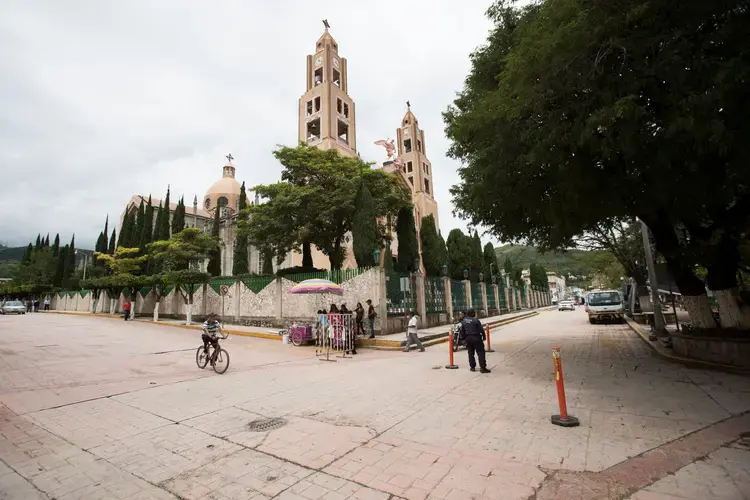
On the Day of the Dead, observed on November 2, Ana and thousands of other area residents gathered at Chilapa’s cemetery to celebrate the lives of their deceased family members. They draped wreaths of orange marigolds over the headstones. Some decorated grave sites with cans of deceased people’s favorite beers; they splashed some beer over the graves. A trio of roving norteño musicians performed by grave sites.
Traditionally on Day of the Dead, Mexicans will remain in the cemetery, accompanying the deceased, well past sunset. But in Chilapa, people left the cemetery in the afternoon, as the sky darkened and scattered showers soaked the headstones. The rain seemed to provide an excuse for people to return to their homes and lock their doors.
Ana, too, seemed to be in a hurry to leave. She declined The Desert Sun’s request to visit her family members’ grave sites.
Ana has remained in Chilapa despite the violence, Alfredo later explained, because she doesn’t want to leave behind the graves of Leonel and her other deceased relatives. Rather than flee Guerrero to protect her life, she’d rather remain in Chilapa with the dead.




